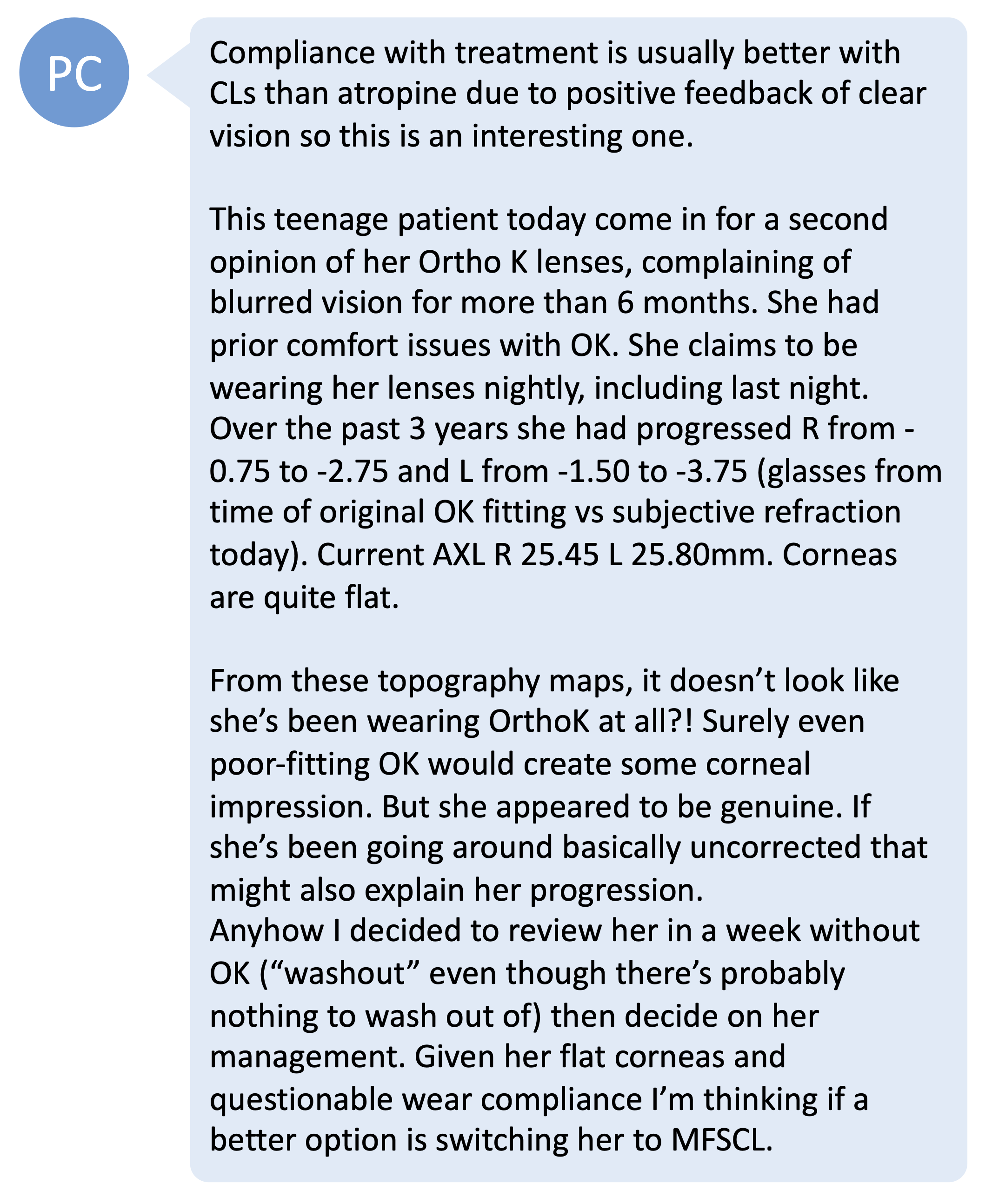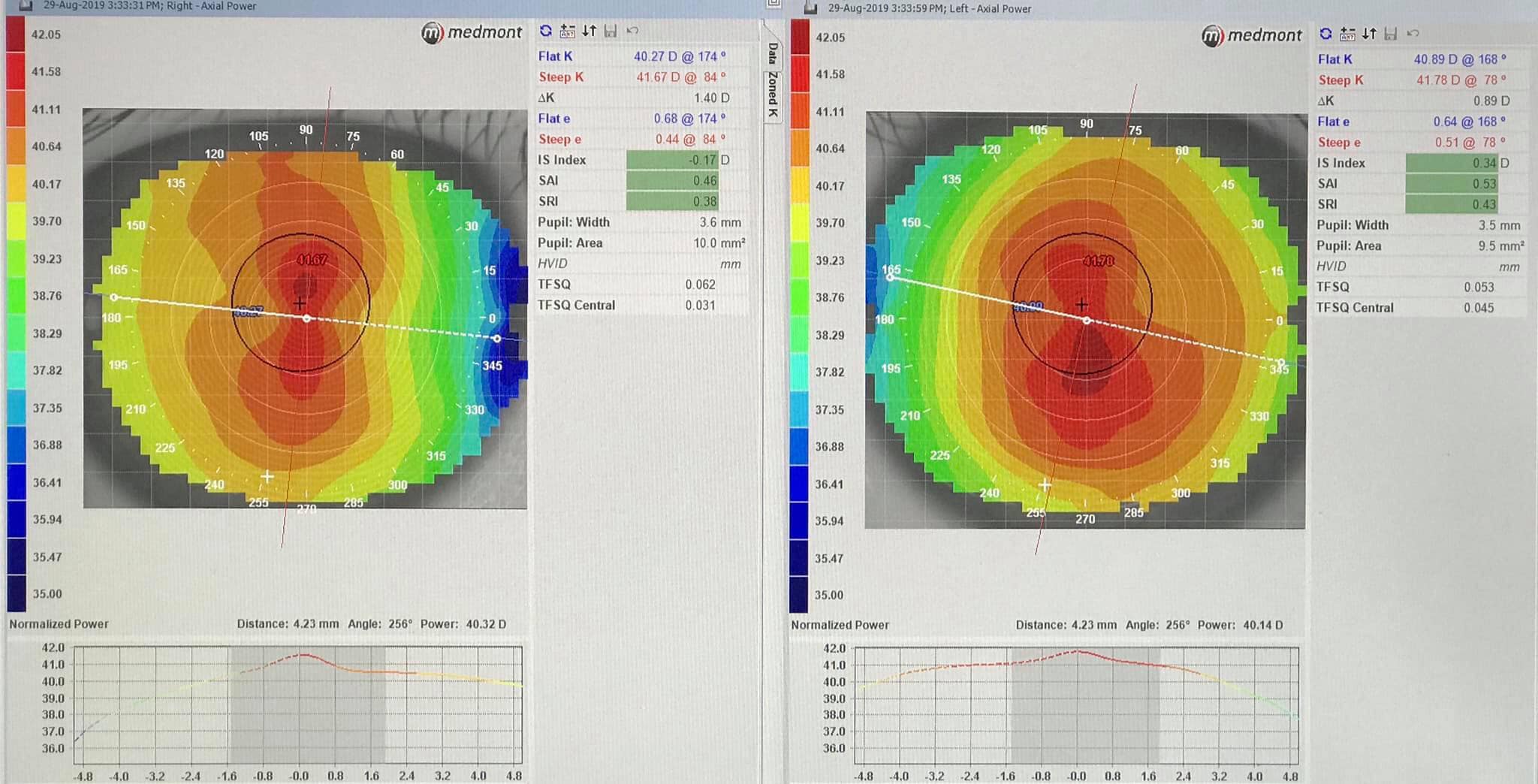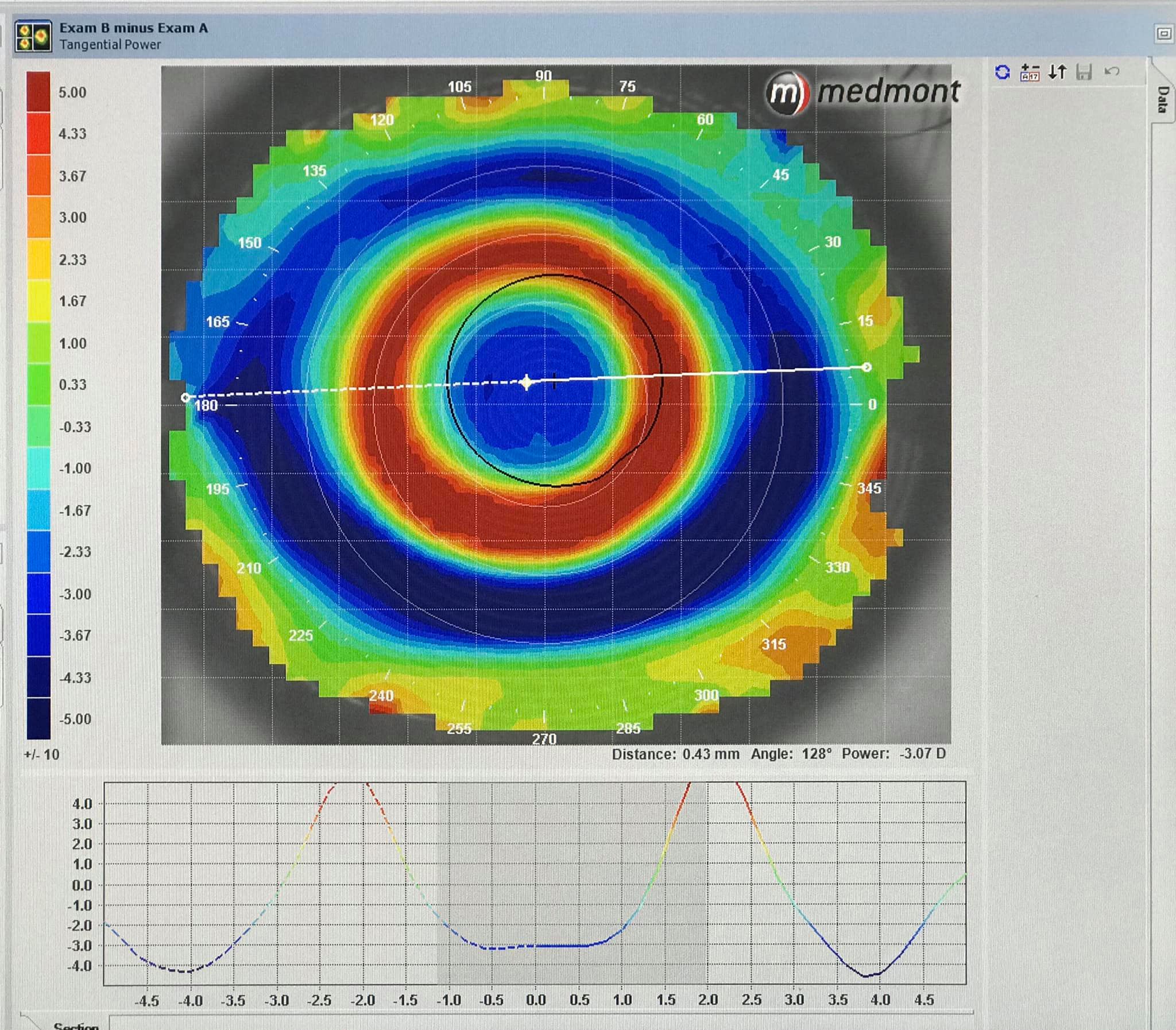Orthokeratology lenses are an effective treatment to slow myopia progression. When they are treating effectively, ortho-k provides clear vision without correction during waking hours, enabling numerous vision and lifestyle benefits for patients.1 Other times, the outcomes can be puzzling. Here is one such case where a patient reports blurry vision despite reportedly consistent use of her ortho-k lenses.


Is this a case of non-compliance or improper lens fit? Each of these have a few supporting reasons that suggest it might be one or the other.
The case of non-compliance:
- Insignificant degree of corneal change
- Blurred day-time vision
- Discomfort with OK lens wear
- -0.75D Myopia progression per year
The case for improper lens fit:
- Insignificant degree of corneal change
- Blurred vision
- Flat corneas
- -0.75D Myopia progression per year
Both of the above are likely scenarios and it is tricky to distinguish whether what you have is an untruthful patient or a lens that needs refitting. In order to figure this out, PC advised a washout for one week - ceasing any ortho-k wear - and then took another set of corneal topography images to compare the difference.
Here is the update



After the problem-solving process of the follow up appointment, the poor treatment issues were resolved by refitting the ortho-k lenses, as shown by the corneal topography maps above.
What if this was a case of non-compliance?
Patients are rarely non-compliant without reason: in fact, non-compliance mostly stems from incomplete or improper performance of lens handling and care protocols.2 When dealing with non-compliance, going back to the fundamentals of wearing time and handling protocols can help to address the root issues.
Incomplete performance of protocols can be the result of inadequate patient education, or simply inattention and forgetfulness.2 For this reason, it is helpful to remind patients and their parents of these essential processes at every follow-up appointment, and to reinforce their importance.
Non-compliance can also be influenced by perceived suitability of the treatment for the patient. In this case, alternative treatments were discussed (multifocal soft contact lenses: MFSCL), but on consideration of what best suited that patient, the decision was made to continue with ortho-k. This highlights the importance of collaborative treatment decision making with patients and their parents or carers.
A recent study on long-term outcomes in children wearing ortho-k revealed that 88% were satisfied with their outcomes. Adherence to regular follow-up appointments decreased from 97% in primary school users to 77% in senior high school wearers. Clear daytime vision was significantly associated with adherence with regular follow-up, indicating the importance of regular clinical care in ensuring the best possible outcomes. While over one-third reported regular symptoms of tearing, excessive blinking and itching with ortho-k wear, these were graded as mild and 98% were willing to continue wearing their ortho-k lenses.3
Take home messages
- Troubleshooting poor outcomes in myopia treatments can be complex. It is important to consider non-compliance as an issue in these cases; taking a collaborative and systematic approach to determine the cause.
- Most cases of non-compliance are not necessarily intentional, but resulting in incomplete performance of processes. Effective communication with the patient and their parents is key in identifying potential reasons for non-compliance.
- Ensuring that a treatment is still suitable and manageable for the patient and their family is important, and can help to turn a poor outcome and unsuccessful patient into an enthusiastic and successful one.
Further reading

About Connie
Connie Gan is a clinical optometrist from Kedah, Malaysia, who provides comprehensive vision care for children and runs the myopia management service in her clinical practice.

About Kimberley
Kimberley Ngu is a clinical optometrist from Perth, Australia, with experience in patient education programs, having practiced in both Australia and Singapore.
This content is brought to you thanks to an unrestricted educational grant from
![]()
References
- Vincent SJ, Cho P, Chan KY, Fadel D, Ghorbani-Mojarrad N, González-Méijome JM, Johnson L, Kang P, Michaud L, Simard P, Jones L. CLEAR - Orthokeratology. Cont Lens Anterior Eye. 2021 Apr;44(2):240-269. (link)
- Jun J, Zhiwen B, Feifu W, Lili L, Fan L. Level of Compliance in Orthokeratology. Eye Contact Lens. 2018 Sep;44(5):330-33. (link)
- Wu SY, Wang JH, Chiu CJ. Assessment of Satisfaction, Compliance and Side Effects among Long-Term Orthokeratology Wearers. Journal of Clinical Medicine. 2022 Jul 15;11(14):4126. (link)











